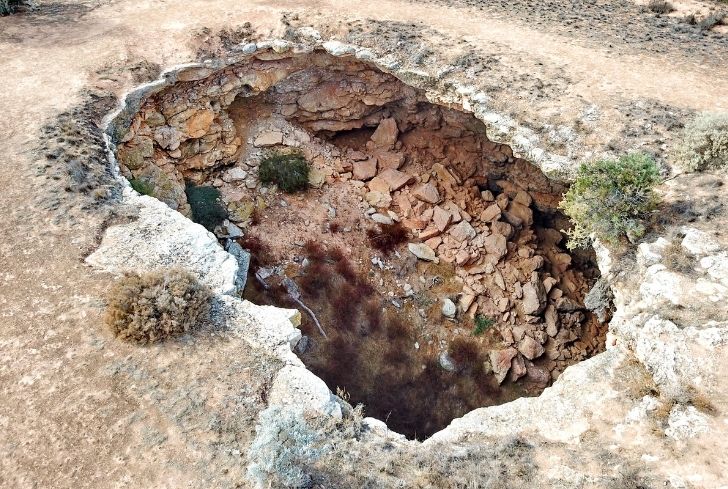Sinkholes are depressions or holes that form on the ground’s surface, often caused by the collapse of underground cavities or soil layers. But what causes sinkholes? They can occur naturally or due to human activities, and their effects can range from minor inconveniences to devastating disasters. In this article, we will explore the causes and types of sinkholes and their effects on the environment and society.
Natural Causes of Sinkholes
Karst Processes
Karst processes are the most common natural cause of sinkholes. They occur in areas where limestone, dolomite, or other soluble rocks are present. Over time, water dissolves these rocks, creating cavities and voids underground. If the soil or rock above the cavities cannot support its weight, it collapses, forming a sinkhole.
Erosion
Erosion of surface materials, such as soil or sand, can also lead to sinkhole formation. This process occurs when water flows over the surface or underground, carrying away sediments and leaving voids in the ground.
Human Activities That Cause Sinkholes
Mining
Mining activities, particularly those involving the extraction of minerals and fossil fuels, can cause sinkholes. When miners remove underground resources, they create voids that can collapse if the surrounding materials cannot support their weight.
Groundwater Pumping
Excessive groundwater pumping can also cause sinkholes. When water is pumped out of underground aquifers, the pressure on the surrounding soil or rock decreases, causing it to collapse and form sinkholes.
Types of Sinkholes
Solution Sinkholes
Solution sinkholes are the most common type of sinkhole and are formed by the dissolution of soluble rocks. They can range from small depressions to large craters and can occur anywhere where soluble rocks are present.
Cover Collapse Sinkholes
Cover collapse sinkholes occur when the soil or rock above a cavity or void suddenly collapses, usually after heavy rainfall or other disturbances. They can be dangerous and occur suddenly without warning.
Subsidence Sinkholes
Subsidence sinkholes occur gradually and are caused by the slow collapse of underground cavities or the compaction of soil or sediment. They can cause damage to buildings, roads, and other structures.
In conclusion, sinkholes can have significant environmental and societal impacts, and it is important to understand their causes and types to prevent and mitigate their effects.
Natural causes, such as karst processes and erosion, and human activities, such as mining and groundwater pumping, can all contribute to sinkhole formation. By understanding these processes, we can take steps to prevent sinkholes and minimize their effects on our communities and the environment.

